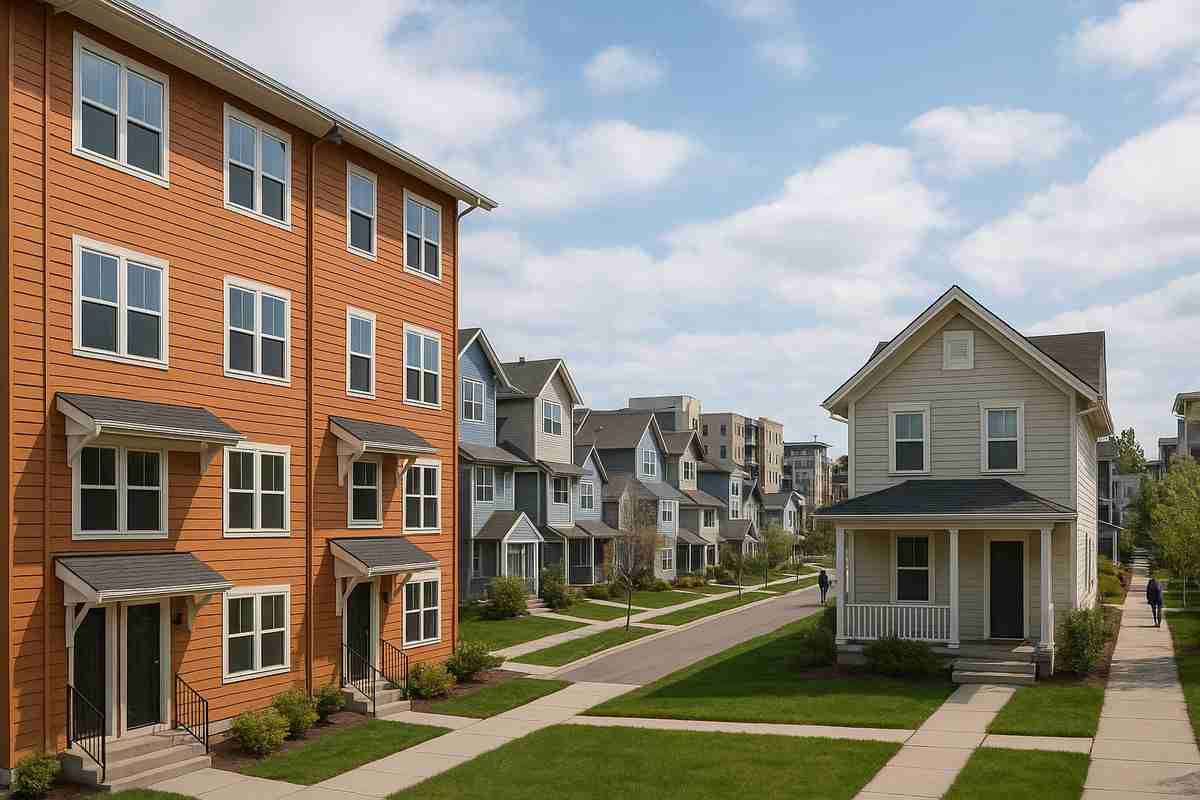In the United States, the housing debate has long been a tug of war between affordability, availability, and community identity. For decades, zoning laws have shaped the way American cities and suburbs look, determining what kinds of homes can be built and where. In 2025, that debate is reaching a new stage as cities across the country experiment with zoning reforms aimed at tackling the housing crisis head-on. From Minneapolis to Portland, Houston to New York, municipalities are testing policies that loosen restrictions, encourage density, and prioritize inclusive growth. The question is whether these reforms can deliver meaningful change in a market where demand continues to outpace supply.
The urgency is undeniable. Home prices and rents have soared in recent years, leaving millions of Americans struggling to find affordable places to live. Teachers, nurses, and service workers in many metropolitan areas now face commutes of an hour or more because they cannot afford to live close to their jobs. Young families are putting off homeownership, while retirees on fixed incomes find themselves squeezed out of the neighborhoods they have called home for decades. The shortage is not just an economic inconvenience. It is a social crisis that influences everything from workforce stability to health outcomes.
At the heart of the problem are zoning laws that in many places have favored single family housing at the expense of more diverse and affordable options. For decades, vast swathes of American cities were zoned to exclude duplexes, triplexes, or apartment buildings, effectively limiting supply and entrenching segregation. Critics argue that these rules have not only made housing scarcer and more expensive but also deepened inequality by shutting out lower income families and communities of color from desirable neighborhoods. Reformers see zoning changes as a way to unlock new housing opportunities, diversify neighborhoods, and rebalance access to amenities like schools and transit.
Recent reforms are beginning to test this theory. Minneapolis made headlines by eliminating single family zoning in 2019, and early results suggest a modest increase in small scale multiunit construction. Portland introduced a Residential Infill Project that allows up to four units on most lots, encouraging homeowners to consider adding backyard cottages or splitting large houses into smaller apartments. California has enacted statewide laws that streamline approvals for accessory dwelling units and duplexes, aiming to increase supply quickly in markets where shortages are most acute. Each of these efforts reflects a growing recognition that incremental changes in zoning can open pathways to affordability.
The effects are visible on the ground. In some neighborhoods, new duplexes and triplexes are beginning to appear where once only single homes were allowed. Empty lots are being repurposed into mixed use developments that combine housing with shops and offices. In suburban areas, accessory dwelling units are giving families flexibility, whether by providing rental income or housing for relatives. While the scale of change is still limited compared with the size of the national shortage, these early projects illustrate what is possible when legal barriers are removed.
Developers and housing advocates point out that zoning reform is only one piece of the puzzle. Financing remains a hurdle, especially for small builders who may lack the resources of large developers. Construction costs have risen sharply due to labor shortages and material price spikes, making it difficult to deliver affordable units even when zoning allows them. Communities also need infrastructure investments in transit, water, and schools to support higher density living. Without these, critics warn, reforms risk fueling resentment rather than relief.
Resistance is another challenge. Homeowners in many neighborhoods remain protective of existing zoning, fearing that new developments will bring traffic, strain services, or alter community character. This “not in my backyard” sentiment has derailed projects across the country and remains a potent political force. Reform advocates argue that the social cost of inaction outweighs these concerns, but building consensus is rarely easy. Successful cities often pair zoning reform with robust community engagement, ensuring that residents feel heard and that changes are tailored to local contexts.
There is also an equity dimension that cannot be ignored. Simply allowing more housing does not guarantee that it will be affordable or accessible to those who need it most. In some cities, upzoning has led to luxury apartments rather than affordable units, raising concerns about gentrification and displacement. Policymakers are experimenting with ways to address this, from inclusionary zoning that requires a percentage of new units to be affordable, to subsidies that support non-profit developers and community land trusts. The goal is not only to increase supply but also to ensure that supply meets the needs of diverse populations.
Nationally, the debate over housing and zoning has entered the political mainstream. Federal leaders are framing housing supply as critical to economic growth, arguing that workers cannot contribute fully if they lack stable housing. Programs that tie federal funding to local zoning reforms are under discussion, signaling that Washington may play a larger role in nudging cities toward change. At the same time, housing remains deeply local, shaped by city councils, planning boards, and neighborhood associations. The push and pull between federal incentives and local autonomy will shape the trajectory of reforms in the years ahead.
For citizens, the stakes are immediate. In Denver, a young teacher who spends half her paycheck on rent wonders whether new zoning laws will ever make it possible to buy a starter home. In San Diego, a retiree debates building a small accessory dwelling unit in her backyard to help her daughter afford rising rents. In Atlanta, a developer sees opportunity in new zoning rules but must navigate financing hurdles to bring affordable townhomes to market. These individual stories reflect the broader challenge: turning legal reforms into tangible improvements in people’s lives.
The housing debate is also influencing cultural attitudes. For much of the twentieth century, the ideal of the single family home with a yard defined the American dream. Today, that vision is being reexamined. Younger generations, more accustomed to apartment living and conscious of climate concerns, are increasingly open to higher density, transit friendly neighborhoods. Environmental advocates note that denser housing reduces carbon footprints by limiting sprawl and car dependency. As cultural expectations shift, zoning reforms may align more naturally with emerging values.
Globally, housing affordability is a challenge in many developed nations, but the American case is distinctive because of its entrenched zoning laws. Other countries, from Japan to Germany, allow greater flexibility in housing types and densities, which helps keep costs more manageable. Reformers argue that the United States can learn from these examples, adapting international best practices to local contexts. If successful, American cities could begin to reverse decades of exclusionary planning and move toward more inclusive and sustainable growth.
The road ahead will not be easy. Zoning reform is slow, often piecemeal, and vulnerable to political shifts. Yet momentum is building, driven by the urgency of the housing crisis and the creativity of cities willing to experiment. Each new duplex built in Minneapolis, each backyard cottage approved in California, each mixed use development in Portland represents more than just housing units. They represent steps toward reimagining how American cities grow, who they serve, and what kind of communities they can become.
As 2025 progresses, the debate over zoning reform is no longer confined to planning commissions or academic papers. It is unfolding in neighborhoods, at kitchen tables, and in the choices of millions of households. Whether these experiments succeed or stumble, they will shape the trajectory of American life for years to come. Housing is not just about shelter. It is about opportunity, dignity, and belonging. The decisions being made now will determine whether the next generation inherits a system of scarcity and exclusion or one of accessibility and possibility.









